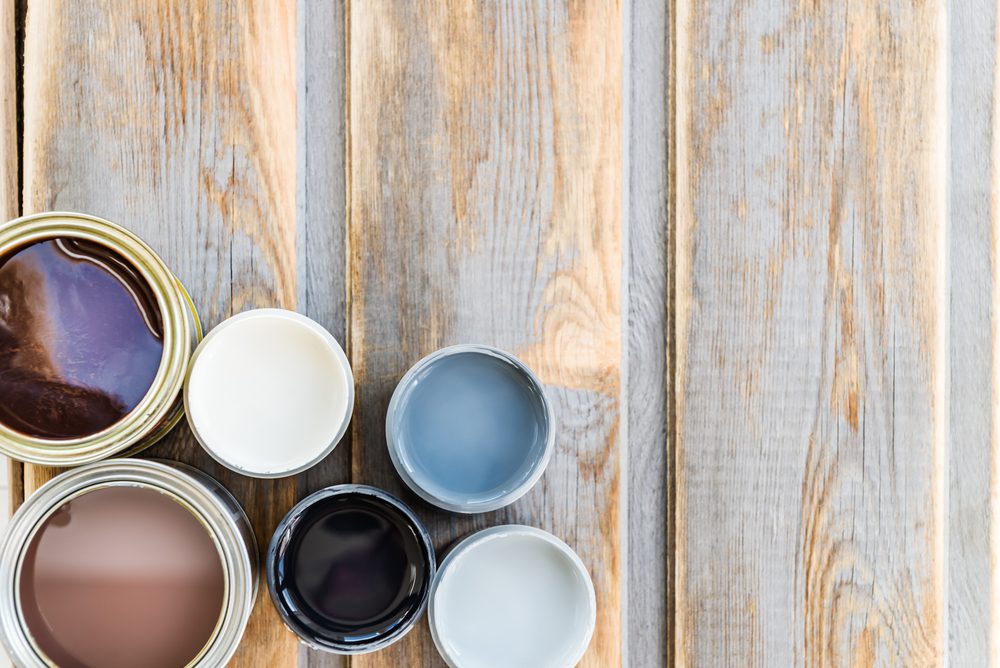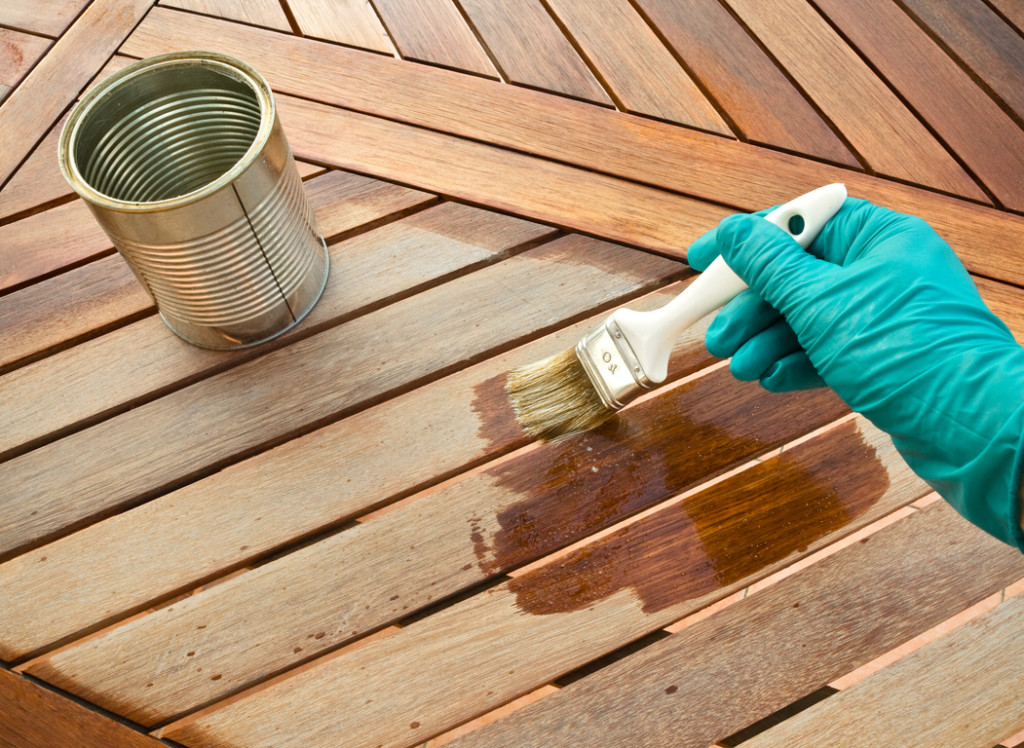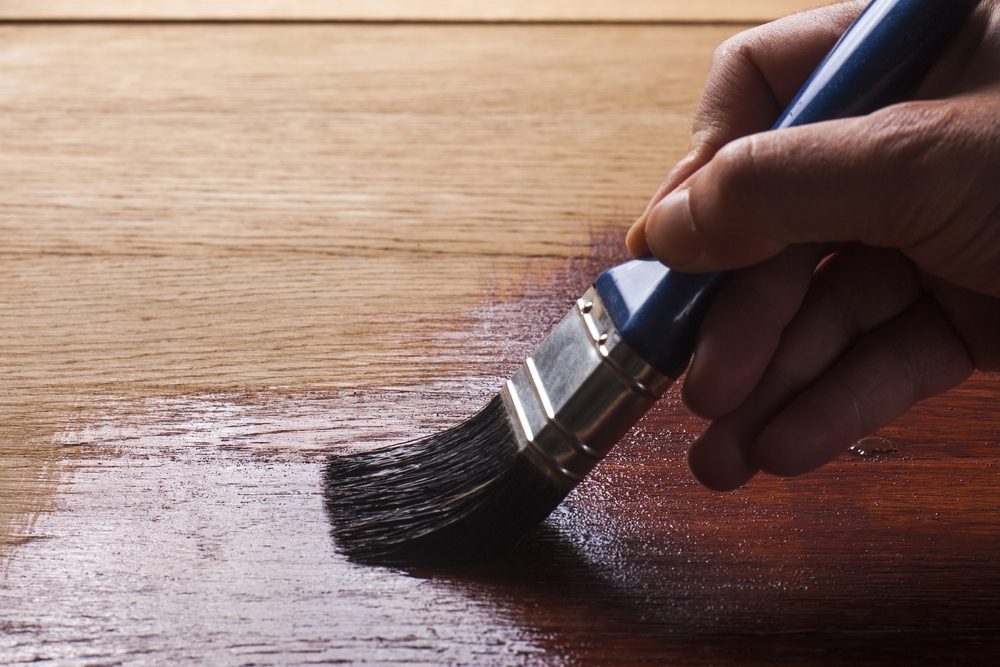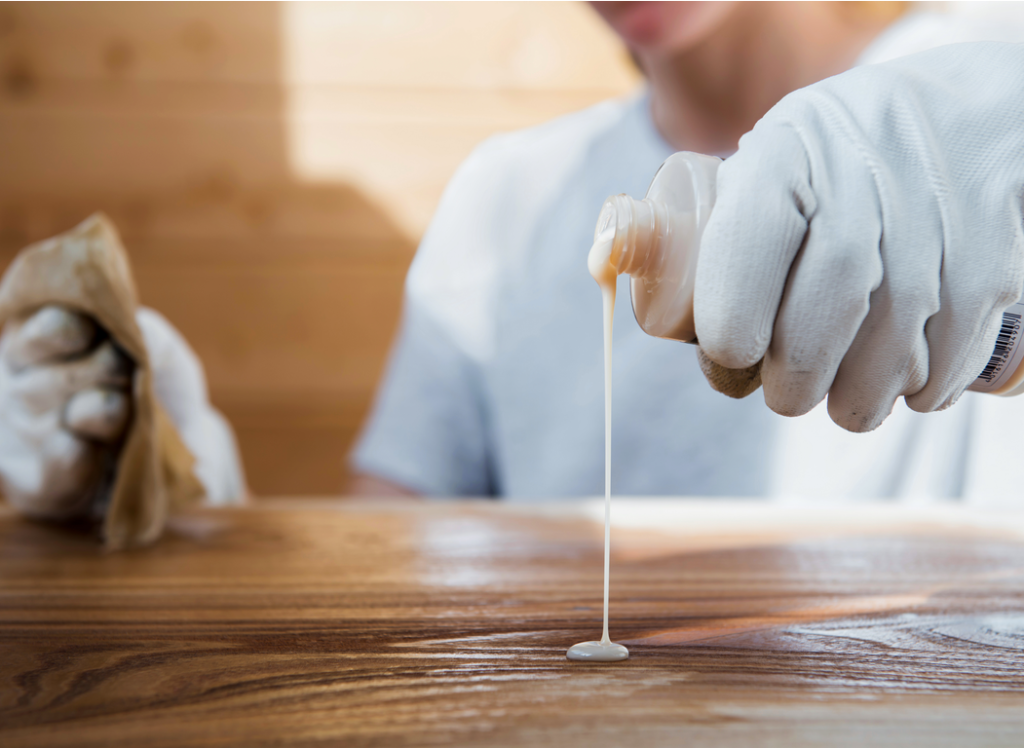
What are the wood finishes that will deliver a custom flair to your home without splashing out too much? There are plenty of options for rejuvenating your wooden floors or creating a completely new look.
Therefore, your choice of flooring does not end when you pick oak, plywood or engineered flooring. On the contrary, that’s where the dance begins. By using different wood finishes, you can transform your floors into custom gems.
You can choose from wood lacquer to wood stainers, wood dye or coloured wood varnish. Moreover, wood finishes are not just about looks. Timber finishes can also provide a certain layer of protection to your wooden floors.
So, what shall you choose? Let us provide you with some insight into the different types of wood finishes out there.
Check out our Finsbury Park Cafe Fine and Grosso Project
The Three Main Categories of Wood Finishes
Wood finishes fall into three main categories.

In the first category, we have evaporative finishes. They usually contain chemical compounds such as acetone, alcohol or nitro-cellulose acting as solvents. One such example of wood finish is shellac lacquer or almost any type of lacquer. Wax wood finish is also an evaporative finish because it is dissolved in petroleum.
In the second category, we have reactive finishes. They contain naphtha or white spirits acting as solvents. Oil-based wood varnish is usually reactive because it changes after being applied to the wood.
The third category includes coalescing finishes. They are generally water-based. Water-based wood dye is one example.
So, What is Wood Stain?
Wood stains are essentially colourants dissolved or suspended in a solvent. The solvent can be alcohol, water, or petroleum. The wood stain colours vary in intensity depending on the density of the wood. They obscure or point out the wood grain.

So, what solvent-based wood stain should you choose? It depends on a couple of factors. First of all, it’s the type of wood flooring. Water-based stains dry quicker. They are low in odour and non-flammable. They offer better breathability.
Furthermore, water-based stains are ideal for more natural-looking wood floors.
On the other hand, oil-based wood stain is easier to apply. It penetrates the wood better than the water-based stain. However, they will not last as much and take longer to dry.
Unlike other finishes, stains do not offer protection. You need to combine them with other types of wood finishes.
Are Wood Dyes Wood Finishes?
Wood dyes can completely change the colour of the wood. They allow for a distinct effect that’s unlike anything else you’ll find on the wood finishes marketplace. Available in oil-based and water-based forms, dyes are usually designed for interior use.
Dyes are normally dissolved in alcohol or water. The difference between wood stains and dyes is that dyes change the colour of the wood without hiding the wood grains.
You can apply the dyes with a brush, sponge or even a spray gun.
Oil Wood Finishes
Wood oil finish does not change the colour of the wood. It just enhances its natural glow. The wood treatment oil is great for old natural-wood flooring that has gotten dull. The natural oil in wood dries out in time, so you can use an oil-based wood treatment to replenish your floors’ glowing appearance.

One very interesting type is the tung oil finish. It originates from China and South Africa, and it is a fine natural wood oil finish that truly enhances the colour of your wood flooring and furniture. Moreover, it is eco-friendly and offers some degree of protection.
Types of Varnish for Wood
Varnish provides a beautiful sheen on wood as a slow-drying, highly-protective finish. It does not affect the colour of the wood, as it has no dyes in it. In fact, varnish is composed of resins, oils and solvents.
Nevertheless, you can add pigments to varnishes. Polyurethane varnish usually contains pigments. It does not penetrate the pores of the wood too much, though.
However, in general, a clear wood varnish is a powerful solvent-based wood preserver. Most people like to use a spray varnish for wood over dyes. It gives the colour a special glow, and it acts as a solid protective layer.
How To Remove Varnish From Wood?
There are various ways of removing varnish from wood. You can do it mechanically with sandpaper, or by using a varnish remover such as a varnish stripper or a citrus-based gel.
Lacquer Wood Finishes
Lacquer wood finishes are thin and solvent-based. Flooring or furniture lacquer is usually applied by spraying the wood.

The lacquer finish is practical, and it dries fast. Clear lacquer for wood might come in matt or satin configurations, so to speak. It changes the appearance of the wood as it penetrates deep into its grains. It looks shiny and luxurious, and it also helps preserve the wood.
Wood Wax Polish
Wax is natural, but it only offers short-term protection. Consequently, it has gone out of fashion. You can apply wood wax polish with a single cloth. However, if you want to see some effects, you need to repeat the process multiple times.
Waxes come in liquid, solid and stick forms. They can be animal, vegetal or mineral sources. Some people might prefer the effect of coloured wood wax. It looks natural and vintage. However, the wood wax stain is softer than varnishes, does not last long or offer too much protection.
Shellac for Wood
Shellac for wood is also a type of hardwood wax. It is made from the secretions of the lac insect. It is insoluble in alcohol and used for polishing and insulations.
What is more, you can have it in a variety of colours that can magically cover damaged wooden surfaces. You can easily apply shellac for wood yourself, and it is quick to dry. The glossy finish it leaves behind looks really nice.
So, Which is the Best Wood Finish?
It’s hard to say. There’s no binary answer here. All of the wood finishes we listed above are consistently used on wooden floors around the world. They have provided some good results in the long term, as well.
Each offer protection, some more than others. Your choice is also down to your preferences.
So, what’s your preference here – Chevron or Herringbone?
If you want a totally different colour for your floor, then you should choose wood dye. If you want to maintain the same natural colour of the floor, go for water-based wood finishes.
Generally, wood oil finishes provide an extra ounce of nourishment to the wood. UV lacquered flooring might not be a bad idea either.
For general household use, brushed and oiled or brushed and unfinished are really excellent natural choices. If you want something more glossy, then go for French polish.
So, if you consider investing more in wood flooring, or you’re simply looking to perk up an existing finish, look no further. At ESB flooring, we supply the perfect floor for your needs. Drop us a line today to find out more about how we can help transform your home. Choosing the right wood finish is up to you.
| Mon-Fri | 8:00AM – 5:00PM |
| Saturday | 10:00AM – 4:00PM |
| Sunday | 11:00AM – 3:00PM |





.svg)
.svg)